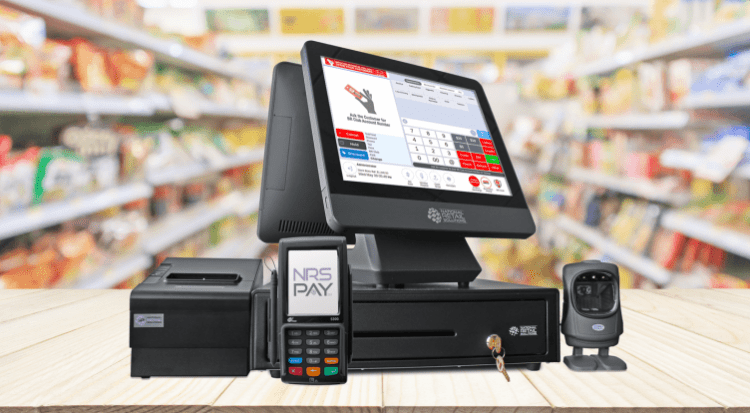
Point Of Sale System Software in Kampala – Uganda
What is a POS system?
A POS system comprises two elements: POS software and POS hardware. POS software is a digital technology platform that completes purchasing transactions. Software can be cloud-based or local server-based; however, cloud-based software is more popular with small business owners due to its usability, affordability, security and convenience. Cloud-based software allows you to access your sales data from any device – even ones that are off-site – as long as you have an internet connection. Although local server-based software offers more stability, it’s more expensive and typically geared toward enterprises.
Bottom Line
A POS system is a combination of hardware and software that allows businesses to complete purchases, record sales data, manage inventory and employees, and view business performance reports.
Types of POS hardware
POS hardware refers to the physical components needed to conduct the sales transaction. Mobile POS systems are becoming the most common choice for small and midsize businesses, especially those that need additional flexibility in their sales processes.
These are the most common types of POS hardware:
- Tablet
- Tablet stand
- Cash drawer
- Receipt printer
- Card reader
- Credit card terminal
Depending on your industry and budget, you can integrate additional POS hardware, such as these items:
- Barcode scanners
- Customer display screens
- Caller ID devices
- Self-serve kiosks
- Coin dispensers
- Kitchen display systems
- Kitchen printers
- Digital menu boards
- Scales
- Tablet cases
Tip
If POS hardware is important to you, check out our review of Clover. It has a variety of proprietary hardware at varying price points.
How does a POS system work?
The basic function of a POS system is to complete sales transactions. However, according to Ivan Ndawula, CEO and founder of Wiza Limited, data from these transactions can be used for many other business functions.
“When a customer wants to complete a transaction, you will utilize a POS system to run their payment – card or cash,” Ivan told wiza.ug. “The POS will generate the transaction and contain all of the data gathered from it. This data can then be stored within the system for inventory tracking, financial reporting, and hosting customer information for future contact and reference.”
Ideally, your POS system will have additional capabilities rather than simply recording sales. Some POS systems integrate with other programs to automate business operations and streamline information sharing. For example, some POS solutions integrate seamlessly with top accounting software and highly rated email marketing platforms.
“Quality POS systems allow the business owner to manage all aspects of operations with multiple features and functionality, including reporting tools to help analyze data and make informed business decisions,”. “By automating various business tasks with [a POS system], you will be able to put additional time into other areas of the business.”
What are the key features of a POS system?
A POS system has features that will help you manage your sales process better and improve customer service.
“A POS system is the central hub for the majority of your business needs – sales, inventory, customer management, even employee benefits and hour tracking,” Ivan said. “A great component of a POS [system] is the fact that everything can live within one place.”
When looking for the best POS system for your business, consider a system that has the following features:
- Purchasing capabilities: Your employees can use a POS system to scan or key in the items that a customer is purchasing, add taxes and calculate the total amount of the sale. The system will then accept payment and generate a receipt.
- Sales data recording: A POS system records and stores customer sales data either in the cloud or on a local server, depending on the system you choose.
- Inventory tracking and management: You can create a product catalog or menu in the system that you use when you’re ringing up customer orders. The best POS systems also track inventory and automatically update quantities as items are sold. Some have low-stock alerts and purchase order features.
- Third-party integration: If you use other business programs to run your business, such as accounting software, payroll and email marketing, you want a POS system that seamlessly integrates with third-party applications. This allows the various applications to share information automatically, eliminating the need to manually download and upload reports, customer lists and other data.
- Reporting: The POS system can generate a variety of reports that help you measure business performance and analyze data for your sales, products, customers and employees.
- Loyalty programs and customer management: Most POS systems have basic customer management tools that allow you to record customer information and create customer profiles that you can use for marketing purposes. Loyalty programs are often available as an add-on feature (at an extra cost) or as an integration.
- Employee management: A POS system should allow you to restrict employee access and capabilities, and record employee sales. Some include time-tracking and scheduling features, but these features are often add-ons or integrations.
Although not every feature may apply to your business or industry, you will need purchasing and sales-recording capabilities.
What are the benefits of POS systems?
At the very least, a POS system can be beneficial to any organization that needs to process customer payments, since this is an essential part of business. However, the software often has features that add even more value.
- It improves efficiency and reduces costs.
Ivan said that any good POS system will give you access to valuable data and reporting tools so you can gain insights into trends and overall business performance in relation to your goals. When you track your processes, you can improve efficiency and reduce unnecessary costs.
“Modules include stock control, sales, customer relationship management, reservations, accounts and staff management,” Ivan said. “With this type of reliable system in place, you’ll spot areas that are performing well and improve those that need more attention. By following this process, your business will become more efficient.”
- It streamlines your inventory management.
POS systems typically come with inventory management features that help you track, manage and order inventory as needed. Since most POS systems can integrate with other platforms, this can streamline your entire supply chain process.
“It benefits the business when POS systems have inventory control and interface with your accounting software so you can automatically record total revenue, discounts, returns, cost of goods, sales taxes, etc.,” Cairns said.
- It helps you manage employee performance and customer relations.
Although employee and customer management capabilities are not always necessary features, they can be extremely helpful for building brand loyalty, connecting with your customers and managing employees.
“[A POS] system allows you to connect with your customers on a whole new level,” Ivan said. “With reward programs, branded loyalty cards and promotions via integrated apps, there is more room for a relationship to grow with your customers. From an HR and employee-engagement point of view, the right system will give you insights into performance and attendance.”
Costs of a POS system
A POS system is an investment. Understanding how it will impact budgeting is a matter of breaking down its costs. The average POS system consists of three separate costs: hardware, software and services.
POS system cost overview
| Component | Cost |
| Hardware | Anywhere from $20 to $1,000, depending on your specific needs |
| Software | Between $500 and $2000 |
Hardware
POS hardware typically costs $20 to $1,000. As with any system, though, the total cost will depend on the type of hardware you need. Some hardware pieces to consider are an iPad (or other touchscreen device), a barcode scanner, a cash drawer and a receipt printer.
Small businesses can often get away with just an iPad and digital receipts. If your store experiences a high volume of customers, though, you’ll need features like physical receipts and cash management. Barcode scanners help with larger and fluid inventories.
Software
Software costs also vary considerably. They range from $500 to $1000 per branch for one register, although advanced systems can cost much more.
The simplest software applications generate a receipt for every sale (typically digitally). Even basic software usually includes some sales tracking and analysis, although it can be pretty light. Advanced software is capable of tracking your inventory and keeping it replenished, and it provides detailed sales analytics. It can unify POS systems across locations and has Omni channel support.
Services
Services include payment processing, contract billing and IT support. You can find plenty of other niche services, but those are the most common.
Tips for choosing the best POS system for your business
Knowing what a POS system can do and how much it will cost can help you make a good decision. These tips will help you put those ideas into context to choosing a POS system.
Traffic
Your store’s traffic is the first consideration because it dictates what you need from your POS. Typically, less expensive systems run a little slower, and that makes them more suitable for retailers that experience a small amount of traffic. The inverse is also true.
Number of sales points
How many points of sale do you need? Are they mobile or stationary? The answers to these questions will determine many of your choices. A mobile vendor needs substantially different hardware than a single shop with one cash register. If you need multiple sales stations, look at bundled pricing.
Features
There are countless features to consider, but four to pay particular attention to are payment processing, support, inventory and analytics. The importance of the features will vary depending on your business. For example, if you have some technical know-how or access to IT services, support may be less of an issue than it would be for a one-person operation. Payment processing can include methods your customers prefer to use when they patronize your business. Do they pay in cash sometimes? All the time? Do some customers pay with a check? Take your customers’ preferences into consideration. Finally, with inventory, some stores need powerful inventory management integration, while some businesses have no inventory at all.
Please contact us for all system development projects
